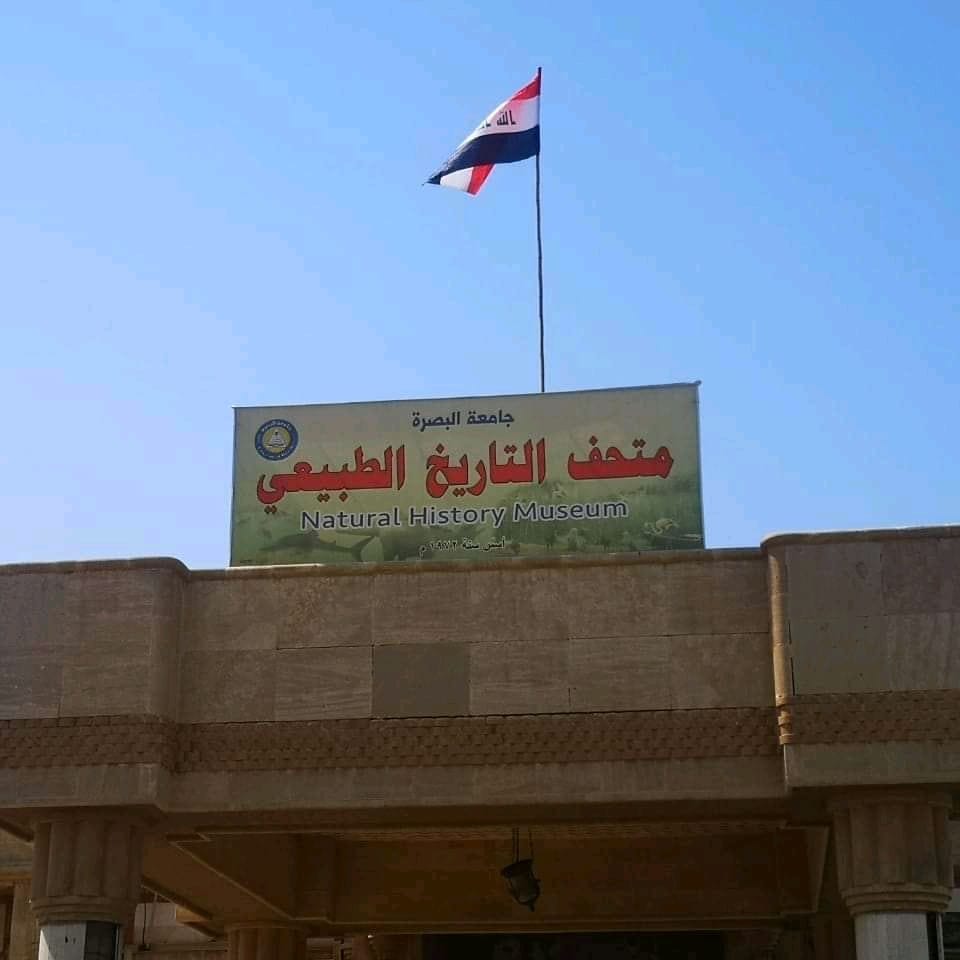The History of The Museum
The Natural History Museum of the University of Basra was establi shed in 1972. It is one of the important scientific, cultural, and tourist centers because it is concerned with the natural history of the Basra governorate environment, which includes the aquatic environment of its marine and river types, marshes, plains and deserts, including all macro and microflora that habitats this environment, as well as the geological nature of these diverse environments to serve as an important scientific reference for researchers, students and those whom interested in the natural sciences.
shed in 1972. It is one of the important scientific, cultural, and tourist centers because it is concerned with the natural history of the Basra governorate environment, which includes the aquatic environment of its marine and river types, marshes, plains and deserts, including all macro and microflora that habitats this environment, as well as the geological nature of these diverse environments to serve as an important scientific reference for researchers, students and those whom interested in the natural sciences.
The museum composed of several exhibition halls that include mummified natural samples of mammals, birds, fish, and other marine animals, in addition to insects and geological samples, which include different samples of rocks and soils. All of these models represent the unique environmental reality of the Basrah governorate.
One of the most famous samples that was exhibited in this museum is a skeleton of a huge whale model (12 meters in length), which was collected from the Arab Gulf. The museum was named natively the Whale Museum after the exhibition of this distinctive model.
The old site of the museum was located on the beach of Shatt al-Arab with an area of 2500 square meters, and it is one of the heritage visual buildings that were mainly the headquarters of an English company called Kermankenzi, which was interested in import and export issues. It was close to the Sheraton hotel and the Central Bank building, and a close distance from the statue of the famous poet Badr Shaker Al-Sayyab. Unfortunately, this site was vandalized, burned, demolished and all its contents were lost in 2003 after the events that accompanied the invasion of the US and coalition forces into Iraq, which led to the museum's work being completely stopped.
Among the pioneering staff of this museum were Dr. Khalil Ibrahim, Abdulridha Batour, Fadel Faraj Al-Jubouri, and Yassin Ibrahim Khamis, all of whom were working in the field of mummification of birds, and then appointed four female employees: Aida Jabro, Maani Al-Shammari, Amal Muzan, and Amal Al-Nasiri. Many Arab and foreign experts also worked in the museum, such as Mister Mirza (a Pakistani, who worked as director of the Lahore Museum before that) and he was a specialist in mummification, as well as the Egyptian expert Muhammad Awad Muhammad Mohsen, who was an expert in marine organisms, who added a lot of experiences to the workers in the museum as he also worked A number of Russian and German experts.
Among the many activities carried out by the museum was the establishment of training courses for male and female teachers about the environment of Basra, the plants, mammals, birds, and fish, to pass them to the students. 10 schools per week.
After the relatively stable conditions of Iraq after 2003, efforts were urged to rebuild this scientific edifice again, and one of the buildings of the government palaces compass, which allocated in the Al-Baradiya area that overlooking the Shatt Al-Arab in 2013. The museum site is still there till now and the efforts of the university and its staff are directed develop it continuously.
Firstly, the work started with the initiation of the marine environment hall, which contains varied models, including various species of fish, crustaceans, mollusks, and others, which reflect the environmental reality of the Arab Gulf region. The marshes hall was also restored, which reflects the reality of the beautiful environment of the marshes, which is rich in many unique plant and animal species and migratory birds, on the basis of which the marshes entered the world heritage list. Furthermore, an exhibition hall for the insects and other arthropods that inhabit the environment of the governorate was initiated, as well as geological samples from different regions of the Basrah governorate.
